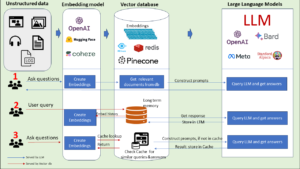Activation Functions in Neural Networks
In the realm of artificial neural networks (ANNs), one of the core elements that enables the network to learn complex patterns and make predictions is the activation function. These functions play a crucial role in introducing non-linearity into the network, allowing it to model complex data patterns that cannot be captured by a simple linear transformation. Whether you’re training a deep neural network (DNN) or a convolutional neural network (CNN), choosing the right activation function can significantly influence the model’s performance and efficiency.
What is an Activation Function?
An activation function is a mathematical operation applied to the output of each neuron in a neural network, determining whether the neuron should be activated or not. It takes a weighted sum of the inputs to the neuron (which is a linear combination of inputs) and transforms it into a non-linear output.
In simple terms:
- Before the activation function: The neuron receives inputs, performs a weighted sum, and passes this sum through an activation function.
- After the activation function: The output is used as the input to subsequent layers of the network.
Why are Activation Functions Necessary?
Without activation functions, a neural network would simply be a series of linear transformations. Essentially, the entire network would behave like a single-layer perceptron, no matter how many layers you have. In other words, no matter how many layers or neurons a network has, it would still be equivalent to a single linear transformation, and thus unable to learn complex patterns.
Activation functions introduce non-linearity into the network, making it possible for the network to learn complex, real-world data patterns, such as those found in image recognition, natural language processing (NLP), and many other AI applications.
Types of Activation Functions
There are several types of activation functions, each with its unique characteristics and use cases. Let’s take a closer look at the most common ones.
1. Sigmoid (Logistic)
The sigmoid function is one of the most well-known activation functions and outputs values between 0 and 1, making it ideal for binary classification tasks.
The function is defined as:
![]()
where x is the input to the function.
Pros:
- Smooth, continuous output between 0 and 1, useful for probability prediction in classification.
- Simple to compute and understand.
Cons:
- Vanishing Gradient Problem: When the input is very large or very small, the gradient approaches zero, causing slow learning during backpropagation.
- Outputs are not centered around zero, which can slow down training and make optimization less efficient.
Use Case:
- Binary classification tasks (e.g., determining whether an image contains a cat or not).
Example:
For input values such as x=−5 or x=5, the sigmoid function outputs values close to 0 and 1, respectively, showing the squashing effect.
2. Hyperbolic Tangent (tanh)
The tanh (hyperbolic tangent) function is similar to the sigmoid, but it outputs values between -1 and 1, which makes it more useful in certain scenarios where the data has negative values or needs to be zero-centered.
The function is defined as:
![]()
Pros:
- Zero-centered output: Unlike sigmoid, the output values are centered around zero, which helps with optimization.
- Like sigmoid, it has smooth, continuous outputs.
Cons:
- Vanishing Gradient Problem: Like sigmoid, tanh also suffers from vanishing gradients when the input is large, making it difficult to train deep networks effectively.
Use Case:
- Used in hidden layers of feed-forward neural networks and RNNs (Recurrent Neural Networks) to introduce non-linearity.
Example:
For an input x=2, the tanh function will output a value close to 0.96, and for x=−2, it will output close to -0.96.
3. Rectified Linear Unit (ReLU)
The ReLU activation function has become the default activation for most deep learning models due to its simplicity and effectiveness.
The function is defined as:
![]()
where xxx is the input to the function.
Pros:
- Computationally efficient: ReLU is much faster than sigmoid or tanh because it simply returns zero for negative inputs and the input itself for positive ones.
- Non-saturating: Unlike sigmoid or tanh, ReLU does not suffer from the vanishing gradient problem for positive values of xxx.
Cons:
- Dying ReLU Problem: When the input is negative, the output is zero, and during backpropagation, the gradient is zero, which can result in dead neurons that never activate again.
Use Case:
- Hidden layers of deep neural networks: ReLU is particularly popular in Convolutional Neural Networks (CNNs) and feed-forward networks.
Example:
If x=−2, the output is 0, and for x=3, the output is 3.
4. Leaky ReLU
Leaky ReLU addresses the “dying ReLU problem” by allowing a small, non-zero slope for negative input values. This ensures that neurons do not become inactive during training.
The function is defined as:
![]()
where α\alphaα is a small constant (e.g., 0.01).
Pros:
- Prevents the dying ReLU problem by allowing a small gradient for negative inputs.
Cons:
- The slope of the negative part is still fixed and might not always be optimal.
Use Case:
- Used in deep networks to avoid dead neurons and maintain gradient flow during training.
5. Softmax
The Softmax function is used primarily in the output layer of a neural network for multi-class classification problems. It converts the logits (raw output scores) into probabilities by taking the exponential of each output and normalizing them.
The function is defined as:
![]()
where ![]() is the input value for class i, and K is the number of classes.
is the input value for class i, and K is the number of classes.
Pros:
- Outputs a probability distribution over the classes, making it perfect for multi-class classification.
Cons:
- Computation can become expensive for a large number of classes.
Use Case:
- Multi-class classification tasks (e.g., classifying an image into one of several categories such as “cat,” “dog,” “car,” etc.).
Choosing the Right Activation Function
While ReLU is the go-to activation function for most deep learning tasks, the choice of activation function should depend on the specific use case and network architecture. Here are some key points to consider when selecting an activation function:
- Sigmoid and tanh: Useful for binary classification or problems where output needs to be constrained between a fixed range.
- ReLU: Works well for hidden layers in deep networks and avoids vanishing gradients, making it faster and more efficient.
- Leaky ReLU: A better alternative to ReLU when the “dying ReLU” problem is encountered.
- Softmax: Preferred for multi-class classification problems in the output layer.
Conclusion
Activation functions are the cornerstone of neural networks, allowing them to learn complex relationships and patterns. The right activation function can drastically improve the performance of a model, while the wrong choice can lead to poor training and convergence issues. By understanding the characteristics and use cases of different activation functions like sigmoid, tanh, ReLU, and Softmax, you can design better neural network architectures and optimize your AI models more effectively.
As always, experimentation is key! Don’t hesitate to try different activation functions depending on your specific problem and dataset.




